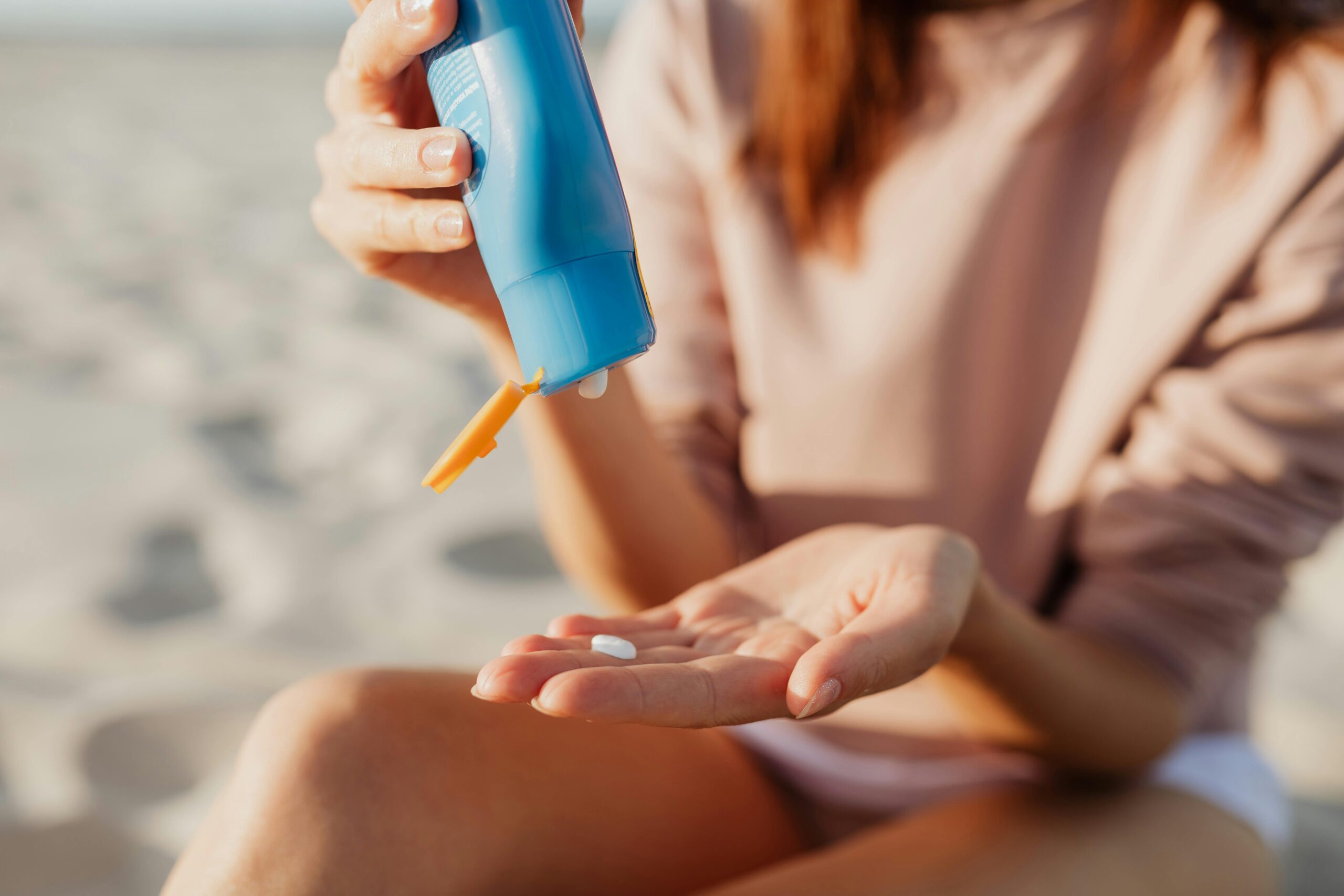Breaking: 75% of Sunscreen Sold in the USA Is Deemed Unsafe for Use

Sunscreen is heralded as a shield against the sun’s harmful rays, an essential tool in our daily health regimen. Yet, a recent report by the Environmental Working Group (EWG) casts a long shadow on this trusted protector, revealing that a staggering 75% of the sunscreens sold in the U.S. may not be as safe as we are led to believe. This revelation prompts a pressing question: What lies beneath the reassuring SPF labels on our favorite sunscreens? In the ensuing discussion, we peel back the layers of what makes a sunscreen safe or harmful, navigating through the murky waters of chemical ingredients and regulatory standards to uncover how best to protect ourselves without compromising our health.
The Core Issues with Sunscreens

As we slather on layers of sunscreen to ward off sunburn and skin damage, most of us trust in the simple assurance of an SPF label. However, the reality is more complicated and concerning. The Environmental Working Group (EWG) reports that a vast majority of sunscreens on the U.S. market do not offer the protection they claim. These products might shield us from sunburn by blocking UVB rays, but many fall short in guarding against UVA rays, which penetrate deeper into the skin and are just as responsible for skin cancer and premature aging.
Compounding the issue, many sunscreens contain chemicals that pose significant health risks. Ingredients like oxybenzone, octinoxate, and homosalate are not just ineffective in offering comprehensive protection but are also implicated in serious health concerns such as hormonal disruptions and skin allergies. These substances are absorbed into the skin and, over time, can accumulate in the body, leading to potential long-term health problems.
The use of these chemicals extends beyond human health impacts, posing a threat to the environment as well. Chemicals commonly found in sunscreens are contributing to the degradation of coral reefs and marine ecosystems, marking a troubling intersection of human and environmental health compromised by inadequate sunscreen formulations.
Dangerous Ingredients to Avoid

As consumers, understanding which ingredients in sunscreens pose risks is crucial for making safer choices. The Environmental Working Group (EWG) has identified several common chemicals in sunscreens that are best avoided due to their potential health and environmental hazards:
- Oxybenzone: This widely used ingredient is known for its hormone-disrupting effects. It can penetrate the skin, enter the bloodstream, and mimic estrogen in the body, potentially leading to altered sperm production in men and endometriosis in women. Oxybenzone is also toxic to coral reefs, contributing significantly to coral bleaching.
- Octinoxate: Similar to oxybenzone, octinoxate disrupts hormone balance, affecting thyroid and reproductive systems. It is readily absorbed by the skin and has been detected in human blood at concerning levels. Additionally, it poses a threat to marine life, particularly coral reefs, which are vital to marine biodiversity.
- Homosalate: This chemical absorbs UV light and is suspected of disrupting estrogen, androgen, and progesterone hormones. Homosalate’s ability to accumulate in the body raises concerns, particularly because it is commonly used in products intended for regular reapplication.
- Octisalate: While it is used to stabilize sunscreen formulations and absorb UVB rays, octisalate has been shown to penetrate the skin and enter the bloodstream. It may cause allergic reactions and, similar to other sunscreen chemicals, poses environmental risks.
- Octocrylene: Known for stabilizing avobenzone and absorbing UV rays, octocrylene has been found to be absorbed into the skin and associated with high rates of skin allergies. It can degrade into benzophenone, a substance linked to cancer and hormone disruption. Octocrylene is also harmful to aquatic life, adding to the environmental concerns linked to sunscreen chemicals.
Regulatory Challenges

The U.S. sunscreen market faces significant regulatory challenges that impact the safety and efficacy of the products available to consumers. Despite growing concerns about the ingredients used in sunscreens, the Food and Drug Administration (FDA), the agency responsible for sunscreen regulation, has been slow to update its standards and approval processes. This sluggish pace has left Americans with outdated and potentially harmful sunscreen options compared to those available in other parts of the world.
The last new sunscreen ingredient was approved by the FDA over two decades ago, and since then, advancements in sunscreen technology have largely been stymied by a cumbersome and lengthy approval process. In contrast, the European Union (EU) has approved over 30 active ingredients for use in sunscreens, offering a wider range of options that provide safer and more effective protection against UV radiation.
The FDA’s lack of urgency in addressing the inadequacies in sunscreen regulation is compounded by the industry’s reluctance to conduct the necessary safety tests and provide comprehensive data on their products. This inertia has left a significant gap in safety data, making it difficult for the FDA to enforce stricter regulations and ensure the safety of sunscreen products.

Moreover, while other countries have moved forward with innovative formulations and safer chemical filters, the U.S. continues to rely on older, less effective, and potentially harmful ingredients. This regulatory lag not only puts American consumers at risk but also affects the environment due to the continued use of chemicals that have been banned or restricted elsewhere due to their ecological impact.
This situation creates a pressing need for a reevaluation of how sunscreen ingredients are approved and regulated in the U.S. Without updated regulations and a proactive stance from both the industry and regulatory bodies, consumers remain at risk of using products that are not only less effective but also pose serious health and environmental risks.
Practical Advice for Consumers

In light of the concerning issues surrounding many sunscreen products, consumers can take proactive steps to ensure they are protecting themselves effectively without compromising their health or the environment. Here are practical tips for selecting and using sunscreen safely:
1. Choose mineral-based sunscreens: Choose sunscreens that contain zinc oxide or titanium dioxide. These mineral-based sunscreens sit on top of the skin rather than being absorbed, providing a physical barrier that reflects and scatters UV radiation. They are less likely to cause skin irritation or hormonal disruptions and are generally safer for sensitive skin and the environment.
2. Look for broad-spectrum protection: Ensure that the sunscreen offers broad-spectrum protection, which means it guards against both UVA and UVB rays. This is critical for preventing skin cancer and premature aging caused by the sun.
3. Check for EWG Verified Products: Products certified by the Environmental Working Group (EWG) meet strict criteria for safety and efficacy. The EWG Verified mark indicates that a sunscreen is free from harmful chemicals and provides effective protection.
4. Avoid harmful chemicals: Read labels carefully and avoid sunscreens containing oxybenzone, octinoxate, homosalate, octisalate, and octocrylene. These chemicals are associated with hormone disruption and environmental damage.
5. Use sunscreen as part of a comprehensive sun protection strategy: Sunscreen should be one part of your sun protection regimen. Wear protective clothing, such as long-sleeved shirts, pants, hats, and sunglasses. Seek shade during peak sun hours (from 10 a.m. to 4 p.m.), and be especially cautious when UV exposure is high.
6. Reapply regularly: Sunscreen should be reapplied every two hours, or more often if swimming or sweating. This is crucial for maintaining effective sun protection throughout the day.
Safeguarding Your Skin and the Environment

As the evidence mounts against many popular sunscreens, it becomes clear that not all sun protection is created equal. With 75% of sunscreens on the U.S. market failing to meet safety standards, it’s imperative for consumers to be vigilant. By choosing mineral-based sunscreens, checking for broad-spectrum coverage, and avoiding harmful chemicals, you can protect your health and contribute to environmental preservation. Remember, sunscreen is just one tool in the fight against skin damage. Combining it with other sun safety measures ensures comprehensive protection.
Embracing safer sunscreens not only benefits individual health but also supports global efforts to protect our marine ecosystems. Making informed choices today paves the way for a healthier, safer tomorrow, both for ourselves and for the planet.
Featured Image Source: Pexels
Source:
- About 75 percent of sunscreens have inferior sun protection or worrisome ingredients. (2022, May 5). Environmental Working Group. https://www.ewg.org/news-insights/news-release/2022/05/about-75-percent-sunscreens-have-inferior-sun-protection-or
Loading...






